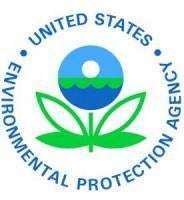Proposal would eliminate exemption used to avoid disclosure of certain PFAS releases
WASHINGTON – Today, the U.S. Environmental Protection Agency (EPA) proposed a rule that would improve reporting on per- and polyfluoroalkyl substances (PFAS) to the Toxics Release Inventory (TRI) by, among other proposed changes, eliminating an exemption that allows facilities to avoid reporting information on PFAS when those chemicals are used in small, or de minimis, concentrations. Because PFAS are used at low concentrations in many products, this rule would ensure that covered industry sectors and federal facilities that make or use TRI-listed PFAS will no longer be able to rely on the de minimis exemption to avoid disclosing their PFAS releases and other waste management quantities for these chemicals.
“PFAS continue to pose an urgent threat to our country and communities deserve to know if they may be exposed because of the way these chemicals are being managed, recycled, or released,” said EPA Administrator Michael S. Regan. “By removing this reporting loophole, we’re advancing the work set out in the Agency’s PFAS Strategic Roadmap and ensuring that companies report information for even small concentrations of PFAS. We’ll make this information available to the public so EPA and other federal, state and local agencies can use it to help best protect health and the environment.”
This proposal reflects the Biden-Harris Administration’s commitment to address the impacts of these forever chemicals, and advances EPA’s PFAS Strategic Roadmap to confront the human health and environmental risks of PFAS.
TRI data are reported to EPA annually by facilities in certain industry sectors and federal facilities that manufacture, process, or otherwise use TRI-listed chemicals above certain quantities. The data include quantities of such chemicals that were released into the environment or otherwise managed as waste. Information collected through TRI allows communities to learn how facilities in their area are managing listed chemicals. The data collected also help support informed decision-making by companies, government agencies, non-governmental organizations, and the public.
The 2020 National Defense Authorization Act (NDAA) immediately added certain PFAS to the list of chemicals covered by TRI for the 2021 reporting year and provided a framework to automatically add other PFAS in future years. The NDAA established TRI manufacturing, processing, and otherwise use reporting thresholds of 100 pounds for each of these listed PFAS. However, the previous Administration codified the NDAA provisions in a manner that allows facilities that report to TRI to disregard certain minimal or de minimis concentrations of chemicals in mixtures or trade name products (below 1% concentration for each of the TRI-listed PFAS, except for PFOA for which the concentration is set at 0.1%).
The proposed rule released today would eliminate the availability of that exemption and require facilities to report on PFAS regardless of their concentration in products.
Currently, facilities are required to report to TRI on 180 PFAS per the requirements of the NDAA. However, in data submitted to EPA in 2021 and 2022, fewer facilities reported PFAS to TRI than expected. In response, EPA conducted outreach, and many facilities contacted claimed the de minimis exemption as a reason for not reporting. The rule proposed today would list PFAS as “chemicals of special concern,” which would make them ineligible for the de minimis exemption.
If finalized, this proposal would also make the de minimis exemption unavailable for purposes of supplier notification requirements to downstream facilities for all chemicals on the list of chemicals of special concern, which also includes certain persistent, bioaccumulative and toxic chemicals like lead, mercury, and dioxins. This change will help ensure that purchasers of mixtures and trade name products containing these chemicals are informed of their presence in mixtures and products they purchase.
Learn more about the proposal.
Read the original press release on the US Environmental Protection Agency's website.




 />i
/>i
